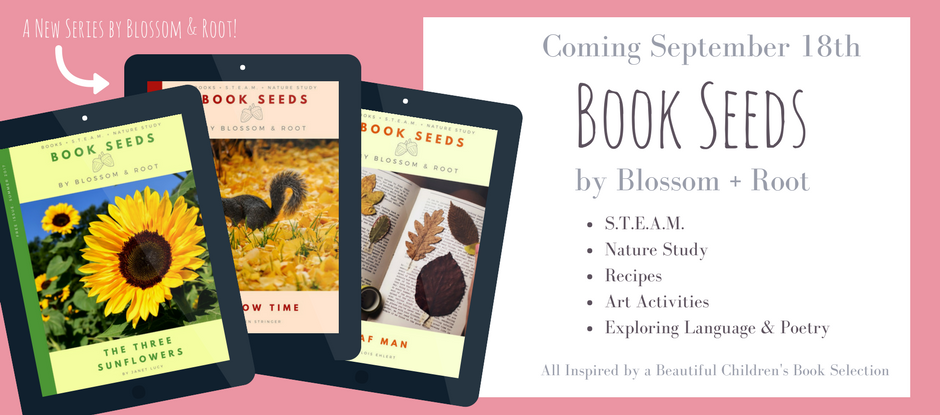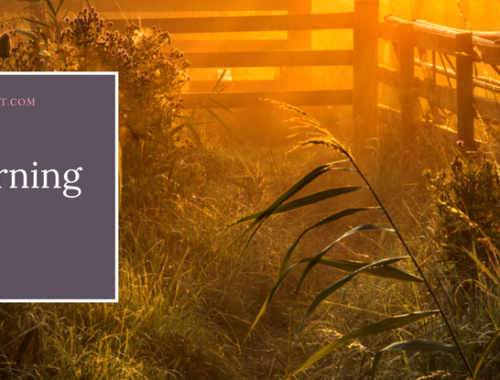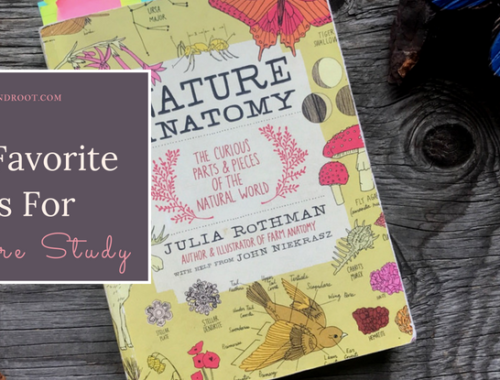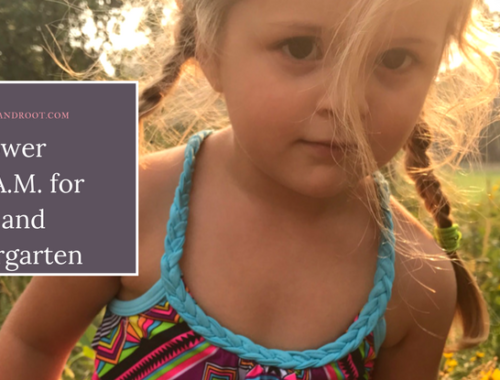“We are all meant to be naturalists, each in his own degree, and it is inexcusable to live in a world so full of the marvels of plant and animal life and to care for none of these things.” – Charlotte Mason
One of the reasons I was so drawn to Charlotte Mason’s philosophies (way back in my school teacher days) was her passion for nature study–not as a fun little extra thing, but as a vital part of a spherical and purposeful education. I grew up with parents that believed this, and spent most of my free hours outside–climbing trees, building shelters, poking around under rocks and logs, and learning the names of the things I found. My dad took me to canyons and lakes, my mom taught me how to plant gardens, and my grandma included me on hikes to every corner of the Rocky Mountains with her hiking group. Being outdoors was as natural to me as breathing, and I knew and understood the balance of life around me.
When I started teaching as a young adult, I immediately noticed a difference in the way many of my students were growing up. Only a handful of them spent time outside regularly, and it wasn’t very much. They didn’t climb, didn’t dig, and demonstrated extreme uncertainty about anything involving mud or bugs. This only seemed to worsen with each new class, year after year. They seemed to be losing touch with basic concepts my generation grew up understanding, things like detecting shifts in the weather, the origins of our food sources, or how to look for insects or animal tracks. When I discovered Charlotte Mason and began introducing her philosophies in my classroom, everything changed. The simple addition of nature study to our curriculum opened everything up and the response couldn’t have been more positive. Curiosity arose, first in the materials I placed before my students, and then on its own while they were playing outside or looking out the window. Connections began to happen. My squirmiest, high-energy students found their groove and blossomed. My timid ones started to take risks and became more adventurous.
When I started homeschooling, I knew nature study was going to be the foundation for our learning. It would be the stable platform upon which everything else would be built. For two years, I’ve experimented and dabbled in a variety of different approaches to nature study and have discovered three that seem to work very well for us. We dance between these three, incorporating all of them into our days and weeks together. If you’re considering adding nature study to your homeschool, these three approaches are all worth looking into:
1. Guided Nature Study
One of the easiest ways to start a nature study practice in your homeschool is to use a resource, such as a curriculum or guide. There are many different options available to homeschoolers, including year-long curriculum like Exploring Nature With Children from Raising Little Shoots, unit-based curriculum like the NaturExplorers series from Our Journey Westward, or suggested activities in recurring publications like the ones published by Wild and Free. When I designed our Blossom and Root Kindergarten curriculum, I incorporated a full year of nature study and nature journaling inspired by The Burgess Animal Book for Children and Seed Babies. I wanted to apply the concept of using nature lore to inspire natural curiosity while outdoors, the way Charlotte Mason describes in her books.

Using a guide or a curriculum takes the guess work out of things, so it works well for parents who need a bit of structural assistance. It can be a wonderful way to introduce nature study into your homeschool without having to plan extensively or organize materials.
2. Literature-Inspired Nature Study
Like most Charlotte Mason-inspired homeschoolers, we read a lot. A LOT. Many of the books we read have nature themes in them, such as insects and peaches in James and the Giant Peach, storms in The Wizard of Oz, and spiders or farm life in Charlotte’s Web. Questions inevitably arise as we read. How do spiders make their webs? What does a peach pit look like? How do tornadoes form? Since we are definitely on the relaxed side of things, we always take time to investigate. Thus, much of our nature study happens as natural response to literature we are enjoying together. Last year, we read The Giving Tree and proceeded to study, one-by-one, every tree in our (then) two-acre jungle property, make leaf crowns, and learn about all of the wonderful ways trees help us to build shelter, feed us, and (most importantly) provide habitats and food for birds, insects, and animals. 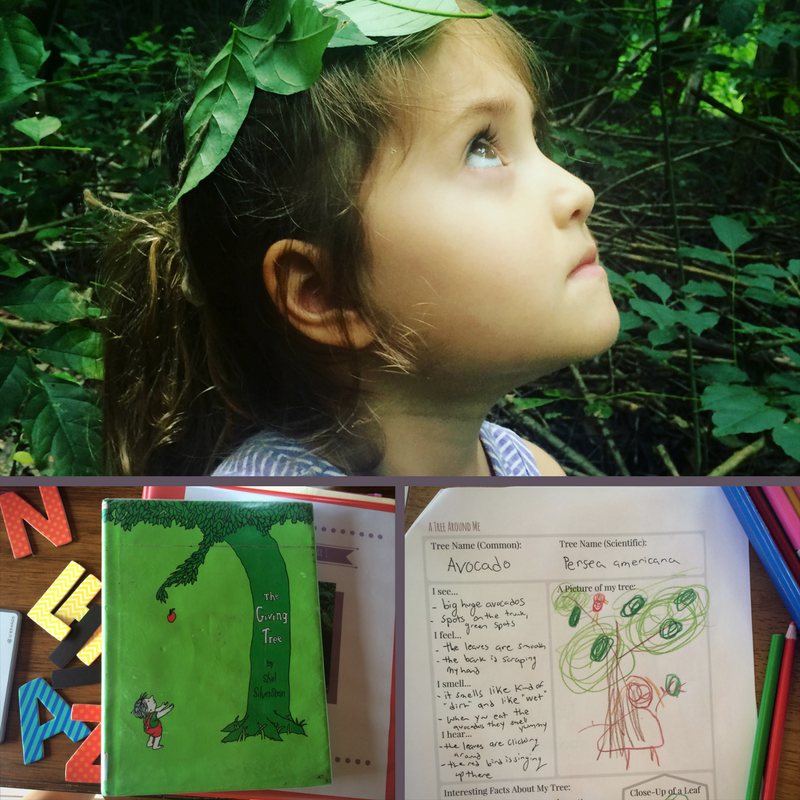
Literature-based nature study can happen whenever, wherever, and however you and your children like. It’s one of our favorite ways to do nature study! In fact, we are launching an entire series of literature-inspired nature study units this month so keep your eyes peeled! The beauty of this approach is the combination of two of the biggest treasures of Charlotte Mason homeschooling–reading rich, inspiring literature and spending time exploring the world around us.
3. Curiosity-Driven Nature Study
Ultimately, this is the easiest kind of nature study to implement because it comes so naturally to children. Children are innately curious about the world around them, and want to know more about the things they see and hear and smell and touch. If, during a hike, your child notices an interesting flower or insect, it’s easy to take a quick picture with your phone and investigate when you get home. We end up spending a great deal of time immersed in curiosity-driven nature study, and have collected many field guides for the birds, trees, rocks, flowers, and animals in our area to use when something catches out attention outside. A year ago, my daughters spotted a curious bundle of caterpillars on a hike in Rocky Mountain National Park. We took pictures and made sketches in the field, then came back to our cabin and found them in our Colorado insects guide. They were tent caterpillars! We spent a little time learning about them, and put our sketches into our nature journals. They still remember seeing them, what their names were, and why they aren’t necessarily a gardener’s best friend.

The best part of curiosity-driven nature study (besides how simple it can be) is that your child’s interest instigates it. Because it is something they want to know more about, they tend to really retain everything they learn and expand on it in future encounters. The next time they see that bug or tree or track in the forest, they remember what they learned. Before they know it, they’ve learned the names and stories of everything around them.
Nature study is such a rich and valuable piece to add to any homeschool, and it can be so easy to implement. What’s your favorite nature study resource? Feel free to share in the comments!
Download Your Free Book List!

Download our free book list: 15 Books That Celebrate the Connection Between Nature and Child. These beautiful selections are sure to inspire nature study in your homeschool this year!


